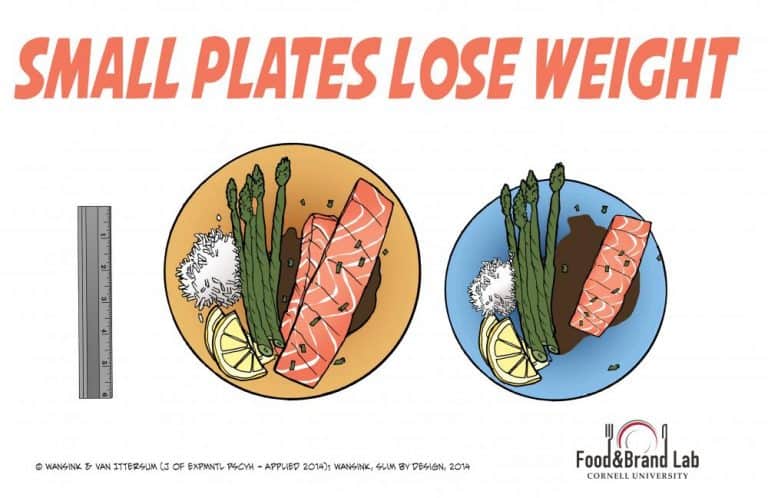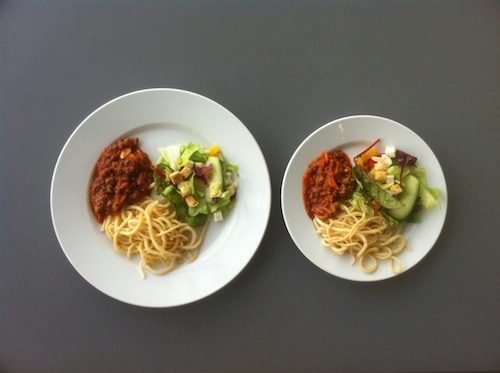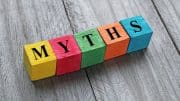A smaller plate can lead to a smaller waist.
I know it sounds ridiculous. I have heard for years that using a smaller bowl or plate will help you eat less. Today, when we eat out, our portions are huge, and they seem to get larger every year. We truly are not only supervising our portion but also our bodies. The question is: Will a smaller plate or bowl provide visual cues to decrease your food intake?
As you can see this from this image from DoctorMurray.com, these plates appear to have the different amounts of food on them. They both have the same amount of food on them[1].
Research:
- Limitless Bowls: A fasicinating study from 2005 looked at the clean you plate (or bowl) effect on consumption of calories. Similar to the all-you-can-eat buffet, they used two types of bowls with one being a self filling bowl and the other being a standard bowl. The study showed that the self filling bowl test group ate 73% more calories than the standard bowl group[2].
- Portion Size: Portion sizes are confusing for most Americans. If you hand most Americans a quart of ice cream or bag of chips and ask them what the serving size is, many will respond with 1/2 or the entire container even when the container is clearly labeled with 3-4 serving on the label. On study illustrates a significant inability to estimate serving sizes in African American women. It compared serving size estimates by the subjects of the study and found that they overestimated a serving size of 7 different foods. The results were worse in subjects who has a larger BMI[3].
- Utensil and Bowl or Plate Size: This has been well studies and there are plenty of studies in adults and children. Many of them were done by Wansink and van Ittersum. One such study looked a subject at a Chinese buffet and found those with a large plate ate 52% more calories[4]. Another study looked at cereal consumption in children and found that children with larger bowls not only took and wasted more cereal, but they also ate almost 50% more calories then their smaller bowl counter parts[5]. The last study showed similar results with ice cream and serving spoons[6]. Subjects with the larger serving spoon ate 14.5% more ice cream despite having the same size bowls.
- The Smaller Plate Study: The most quoted study on this topic is also by Wansink and Can Ittersum. This study looked at two-sized plates and the portions eaten when they were allowed to self-serve (think all-you-can-eat buffet). The smaller plate test group consumed 22% less calories[7]. The study kicked off a life style called the Small Plate Movement.
- Conflicting study: One study by Shah looked at plate sizes and found that it did not matter what plate a group of female test subjects that were normal, overweight, or obese[8]. I feel the study is flawed because of the instructions they were given in the study. The subjects in the study we told to eat until they were full. This instruction would have biased them to eat more in my opinion.

In addition to assisting with trimming our waistlines, this research could also help us make significant reductions in food waste and costs. At home, you will waste less and eat less. When out, I recommend that you avoid all-you can eat buffets, but if you must: get a small plate and/or spoon and drink 1-2 glasses of water before you eat. You will eat less.
Recommendation: Even though it might not make sense, If a smaller plate makes you feel like you are eating more with the same amount of food, I say go out and replace your dishes with mini plates and saucers. While you at it, use a smaller serving spoon. The Cornell Food& Brand Lab is another good resource for information[9].
Can I serve and eat my ice cream with a sample spoon from the ice cream shop?








Be the first to comment on "Research Proven Weight Loss: Smaller Plate"